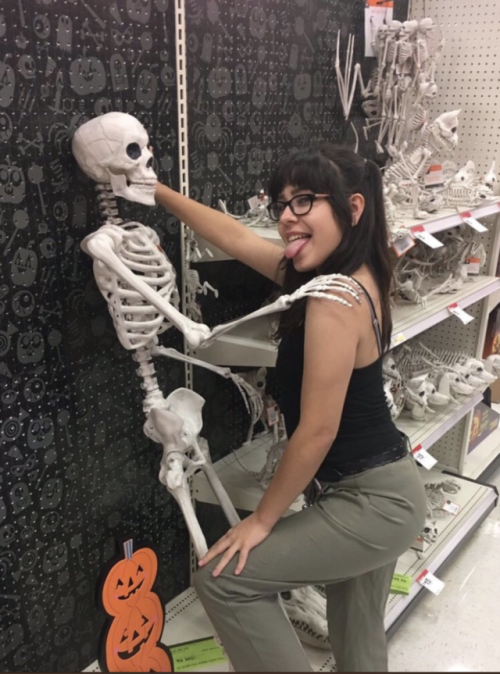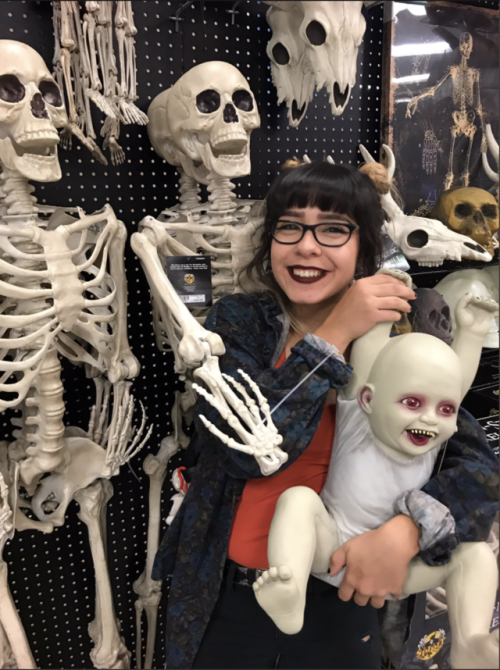7even11eleven-blog - This Is Me For Now

More Posts from 7even11eleven-blog and Others

http://iglovequotes.net/


I hope someone catches my paper airplane today 🌈 though we may be different, i love you and you ARE supported no matter what.
Solar System: Things to Know This Week
We love Lucy—our spacecraft that will visit the ancient Trojan asteroids near Jupiter, that is. This week, let us count the ways this 2021 mission could revolutionize what we know about the origins of Earth and ourselves.
1. Lucky Lucy

Earlier this year, we selected the Lucy mission to make the first-ever visit to a group of asteroids known as the Trojans. This swarm of asteroids orbits in two loose groups around the Sun, with one group always ahead of Jupiter in its path, and the other always behind. The bodies are stabilized by the Sun and Jupiter in a gravitational balancing act, gathering in locations known as Lagrange points.
2. Old. Really, Really Old

Jupiter’s swarms of Trojan asteroids may be remnants of the material that formed our outer planets more than 4 billion years ago—so these fossils may help reveal our most distant origins. “They hold vital clues to deciphering the history of the solar system,” said Dr. Harold F. Levison, Lucy principal investigator from Southwest Research Institute (SwRI) in Boulder, Colorado.
3. A Link to The Beatles

Lucy takes its name from the fossilized human ancestor, called “Lucy” by her discoverers, whose skeleton provided unique insight into humanity’s evolution. On the night it was discovered in 1974, the team’s celebration included dancing and singing to The Beatles’ song “Lucy In The Sky With Diamonds.” At some point during that evening, expedition member Pamela Alderman named the skeleton “Lucy,” and the name stuck. Jump ahead to 2013 and the mission’s principal investigator, Dr. Levison, was inspired by that link to our beginnings to name the spacecraft after Lucy the fossil. The connection to The Beatles’ song was just icing on the cake.
4. Travel Itinerary
One of two missions selected in a highly competitive process, Lucy will launch in October 2021. With boosts from Earth’s gravity, it will complete a 12-year journey to seven different asteroids: a Main Belt asteroid and six Trojans.
5. Making History

No other space mission in history has been launched to as many different destinations in independent orbits around the Sun. Lucy will show us, for the first time, the diversity of the primordial bodies that built the planets.
6. What Lies Beneath
Lucy’s complex path will take it to both clusters of Trojans and give us our first close-up view of all three major types of bodies in the swarms (so-called C-, P- and D-types). The dark-red P- and D-type Trojans resemble those found in the Kuiper Belt of icy bodies that extends beyond the orbit of Neptune. The C-types are found mostly in the outer parts of the Main Belt of asteroids, between the orbits of Mars and Jupiter. All of the Trojans are thought to be abundant in dark carbon compounds. Below an insulating blanket of dust, they are probably rich in water and other volatile substances.
7. Pretzel, Anyone?

This diagram illustrates Lucy’s orbital path. The spacecraft’s path (green) is shown in a slowly turning frame of reference that makes Jupiter appear stationary, giving the trajectory its pretzel-like shape.
8. Moving Targets

This time-lapsed animation shows the movements of the inner planets (Mercury, brown; Venus, white; Earth, blue; Mars, red), Jupiter (orange), and the two Trojan swarms (green) during the course of the Lucy mission.
9. Long To-Do List
Lucy and its impressive suite of remote-sensing instruments will study the geology, surface composition, and physical properties of the Trojans at close range. The payload includes three imaging and mapping instruments, including a color imaging and infrared mapping spectrometer and a thermal infrared spectrometer. Lucy also will perform radio science investigations using its telecommunications system to determine the masses and densities of the Trojan targets.
10. Dream Team
Several institutions will come together to successfully pull off this mission. The Southwest Research Institute in Boulder, Colorado, is the principal investigator institution. Our Goddard Space Flight Center will provide overall mission management, systems engineering, and safety and mission assurance. Lockheed Martin Space Systems in Denver will build the spacecraft. Instruments will be provided by Goddard, the Johns Hopkins Applied Physics Laboratory and Arizona State University. Discovery missions are overseen by the Planetary Missions Program Office at our Marshall Space Flight Center in Huntsville, Alabama, for our Planetary Science Division.
Make sure to follow us on Tumblr for your regular dose of space: http://nasa.tumblr.com

I noticed that in the last year of letters from Alexander Hamilton and John Laurens, Alexander becomes less affectionate in his letters. In early letters his goodbye’s were always:






But then in the the last several letters Alexander sends to John are but simply signed off with:

In John’s letters to Alexander he doesn’t write much affection- though it becomes obvious through the things he wrote that he really cared for Alexander. When Alexander begins to become distant he starts becoming more protective:

and begins signing off his letters with more affection and in his last letter to Alexander (that we have found) he writes one of the most affectionate things he’s ever written to Alexander

Something must of changed in their correspondence, while Alexander is growing more distant, John is growing more affectionate. The mood changed and Alexander in the last letter he wrote to John seems to have realized how much he missed John writing to him:

His partings change and instead of simply writing “adieu” he begins writing with the affection he wrote with before. It is doubtful that John ever received Alexander’s last letter. Which means John died thinking that Alexander was loosing his love for him.





blue whales are the largest animal ever recorded, like you literally need to be in a helicopter to actually see one in from a perspective with zero distortion. idk i just feel pretty lucky to be alive on earth at the same time as them and they don’t even want to kill me. they just wanna use their toothbrush mouthes to filter the ocean of smol ocean bugs. they have communities and they sing to each other to communicate. work is slow im sorry happy friday whales r so cool
-
 mosevelsor liked this · 7 years ago
mosevelsor liked this · 7 years ago -
 awesomeshelleythings reblogged this · 7 years ago
awesomeshelleythings reblogged this · 7 years ago -
 goldenmango reblogged this · 7 years ago
goldenmango reblogged this · 7 years ago -
 melissaxoxo21 liked this · 7 years ago
melissaxoxo21 liked this · 7 years ago -
 lumona reblogged this · 7 years ago
lumona reblogged this · 7 years ago -
 sammixo8 liked this · 7 years ago
sammixo8 liked this · 7 years ago -
 bulletproofjenn reblogged this · 7 years ago
bulletproofjenn reblogged this · 7 years ago -
 bulletproofjenn liked this · 7 years ago
bulletproofjenn liked this · 7 years ago -
 eclectic-like-furniture reblogged this · 7 years ago
eclectic-like-furniture reblogged this · 7 years ago -
 blueeunderthesamesky reblogged this · 7 years ago
blueeunderthesamesky reblogged this · 7 years ago -
 cubanbroski-blog liked this · 7 years ago
cubanbroski-blog liked this · 7 years ago -
 ijustpoststuffilike reblogged this · 7 years ago
ijustpoststuffilike reblogged this · 7 years ago -
 tuulihan-blog liked this · 7 years ago
tuulihan-blog liked this · 7 years ago -
 daciavu-xo reblogged this · 7 years ago
daciavu-xo reblogged this · 7 years ago -
 marukokris reblogged this · 7 years ago
marukokris reblogged this · 7 years ago -
 marukokris liked this · 7 years ago
marukokris liked this · 7 years ago -
 xhrystal-vampire reblogged this · 7 years ago
xhrystal-vampire reblogged this · 7 years ago -
 xhrystal-vampire liked this · 7 years ago
xhrystal-vampire liked this · 7 years ago -
 random-things-i-care-about reblogged this · 7 years ago
random-things-i-care-about reblogged this · 7 years ago -
 blushila-xo reblogged this · 7 years ago
blushila-xo reblogged this · 7 years ago -
 daydreams-and-tea liked this · 7 years ago
daydreams-and-tea liked this · 7 years ago -
 recherchezetdetruisez liked this · 7 years ago
recherchezetdetruisez liked this · 7 years ago -
 justlacey reblogged this · 7 years ago
justlacey reblogged this · 7 years ago

